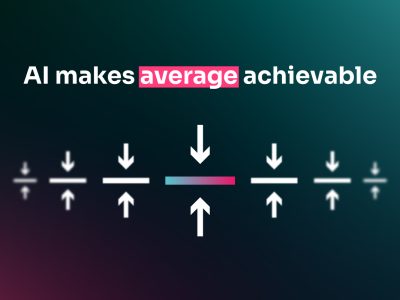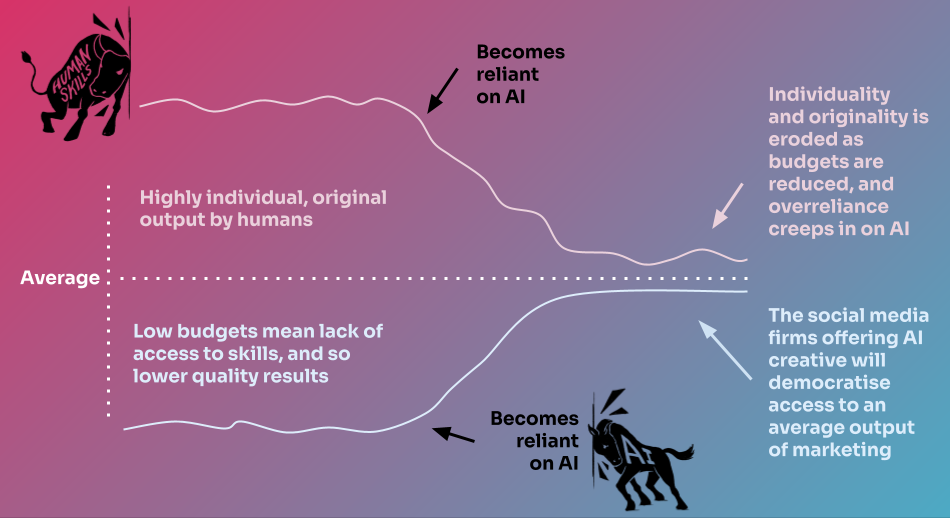November 4, 2025
AI doesn’t mean the same thing to everyone. AI isn’t a single tool or website and it’s not even a single piece of technology. So it’s not surprising that there are as many opinions about AI as there are AI tools on the market.


Every leap in technology has come with its detractors. The mechanisation of farming led to a huge increase in the efficiency of food production which helped reduce commercial food costs but there were significant jobs losses and, in some cases, the destruction of supporting industries. Likewise, the machine-breaking Luddites of the 19th-century whose violence against automated factory practices became so impactful that it created a whole new term for the technologically adverse. Social media, mobile phones, 5G, electric cars; every advance in technology comes with its cynics and rightly so.
Progression doesn’t stop, it’s simply a matter of working out how emerging technology can be a benefit for you, your tasks, projects or processes with the correct diligence and caution for its potential downsides.
If you aren’t a naturally good writer or need to improve the pace of research, AI can help. Likewise, for the huge majority of people without design skills or access to premium Adobe subscriptions, AI will improve the quality of creative output for non-specialists. Access to higher levels of creative output is suddenly democratised with free or low cost AI tools. This, in turn, raises the quality of the lower end of written, coded or visual work. In time, this also helps push industries forwards, helping to raise the standards of work across all participants.
Taking a step away from Generative AI, there is a huge scope to improve the access businesses of all sizes have to high volume data processing tools to enhance predictive modelling, productivity and automation.
AI uses vast data sets to generate its outputs, whether that’s an answer to a question or designing a logo. Most commonly, that data set is created by crawling accessible content and data of all types from across the internet. An AI model will pull from all its available data and reference points, weighing up the authority and trustworthiness of its sources and returning an answer or output to you. AI isn’t creating anything from scratch, really it’s just aggregating and combining what already exists online.
That comes with its downsides.
Early roll-outs of Google AI overviews led to many single posts on Reddit being used as a source for questions asked via Google search. Citing a single anonymous personal opinion as a definitive answer comes with an enormous amount of risk. McDonalds tested AI driven voice orders for nearly 6 years before decommissioning it in 2024 because of misinterpreted orders.
If you are a top level designer, copywriter or developer, AI can still offer you productivity improvements but it’s likely its creative output isn’t going to match what you are already doing. Also when it comes to various factors such as ownership, compliance and brand impact, there are some further risks that come from aggregated work.
In most jurisdictions, AI output is in the public domain, and isn’t owned by the user or company using the AI tool. When it comes to branding or other high value work this can cause serious issues in the long term. In many regions, including the EU, AI generated content has to be labelled as such. For many users, this may discredit the work and reflect badly on the brand. Equally, nothing risks long-term damage to brand perception than if brand copy, statements or assets are too similar to the competition. This is a risk created by using the aggregated information which AI tools rely on.

As indicated in the chart above, Generative AI can make the average more achievable than ever before. For most businesses being average isn’t good enough. The use of AI thus becomes a question of how it can add the most value to you, from where you are now. If you are a great designer, don’t compromise by leaving critical design decision-making to AI. However, if you have to make one poster a year for the Christmas party, congratulations! AI is here to help.
Pick your battles, know where you outperform the average and double down on skills which set you apart from AI.